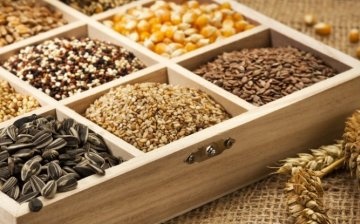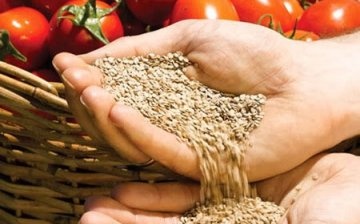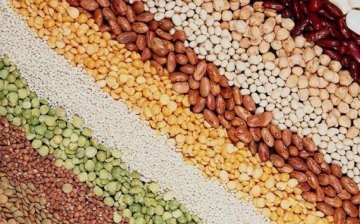What plants reproduce by seeds: types and tips for planting seeds
The seed method of propagation of cultivated plants can hardly be called the most popular and simplest. In culture, annual plants are propagated by seed or those plants that cuttings take root more difficult and do not give roots. Everyone can master this method. It is enough to understand the essence of this method and follow all the rules.
Content:
Features and benefits of seed propagation
The seed propagation method is definitely more effective than the spore method, also known in botany. In the wild, plants most often reproduce in this way. Seeds already have a supply of nutrients that allow the sprout to hatch at the right time and under the right conditions.
Plant seeds have a protective shell that protects the core and prevents the sprout from emerging prematurely.
In culture, plants can be propagated as seedsand cuttings, shoots, etc. You should know which plants are propagated by seeds in order to achieve a more effective result and rich harvest... So, for example, when propagating indoor plants, the seed method is rarely used, but almost all exotic plants grown at home are recommended to be propagated by seeds.
The main advantage of seed propagation is that the daughter plant adopts all the characteristics of the parent plant variety (this does not apply to fruit trees and hybrid varieties). However, there is also a drawback: after landing the seed must take a long time for the plant to bloom and bear the first fruits. After planting the cuttings, the fruits appear much faster.
Seed-grown perennials grow much slower than annuals. Their size can remain small for several years. It is convenient to use seeds to propagate plants that need to be obtained in large quantities at once. Planting each stalk is quite laborious, while planting many seeds at once will not be difficult. The seeds are easy to store. If properly harvested, they can be stored for several years without losing their germination. If you harvest seeds from healthy plants, the chances of growing the same healthy plants with a rich harvest are significantly increased.
What plants reproduce by seeds
Most plants reproduce in their natural environment seeds... In culture, there is usually a choice of breeding method.
The gardener can choose the method that suits him best or suits him best.
But still there are those plants that can only reproduce by seeds for various reasons, or for which this method remains preferable:
- A coffee tree. You can grow an exotic coffee tree at home from just one grain. This is not the easiest task, but quite doable. Purchase a regular (not roasted) coffee bean and cut the shell before planting. This plant is not only beautiful, decorative, it exudes a pleasant smell and bears fruit.
- Mango, avocado and other tropical plants. When growing exotic plants from fruit seeds it is worth remembering that they grow fast enough, require a lot of heat and sufficient moisture. You should choose a bone of a ripe fruit, you can also take an overripe one, in which the bone has already burst a little. Such bones are not dried or stored, they germinate only fresh.
- Lemons... Growing a fruit-bearing lemon from a seed at home is not as difficult as it might seem at first glance. As a result, you can get a beautiful houseplant and ripe fruits full of vitamins. However, only fresh seeds germinate well. If the lemons are store-bought, it's best to stock up on plenty of seeds to get at least one sprout.
- Royal begonia. It is a very beautiful houseplant with velvety bright leaves. It is propagated by both cuttings and seeds. The first sprouts from the seed will be green and will take on color as they grow.
- Seeds are also recommended to propagate vegetable crops (zucchini, tomato, cucumbers), legumes (beans, peas), etc.
Tips for planting seeds
To get a rich harvest, you need to know the basic rules. landing and leaving, as well as storage and collecting seeds. There are some secrets of planting seeds that will help make the process of growing plants easier and more effective:
- Almost all seeds need to be processing... The processing method depends on the quality of the seeds. Some are enough to soak in water for a day to activate the processes in them, others need to be kept in the cold or treated with chemicals to dissolve the protective hard film.
- Before sowing, it is advisable to treat the seeds with a weak solution of potassium permanganate in order to destroy the infection that could have come from the mother plant.
- The timing of sowing seeds differs depending on the type and variety of the plant, but almost always the seeds are sown in the spring, when the night frosts have passed. If these are potted house plants, seeds can be sown year-round, depending on the variety and variety, it is only important to have enough heat and light.
- The sowing soil is also selected individually. A mixture of peat and sand is considered universal. In such soil, seeds of almost all plant species germinate. To avoid contaminating the soil, you can warm it up in the microwave.
- When planting seeds it is important not to pour them in large quantities. Too frequent sprouts will either have to be thinned out or planted ahead of schedule.
- Don't forget about the choice of seeds. They should be bought in specialized trusted stores, and damaged ones should be carefully selected. Thus, you can save your time and effort, grow a rich harvest or decorate your home with colorful seed-grown ornamental plants.
More information can be found in the video.













